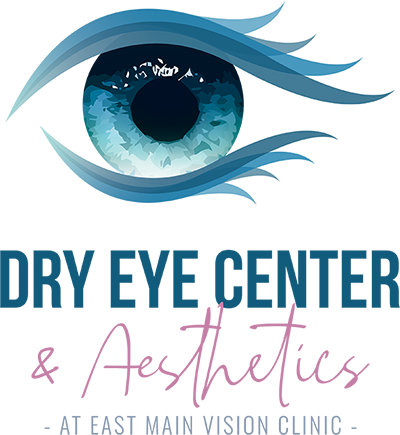
What is
Dry Eye Disease?
Dry Eye Disease (DED) is a condition in which your eyes do not produce enough tears or that you produce tears that do not have the proper chemical composition. This causes what people describe as having “dry eyes.” The tears your eyes produce are necessary for overall eye health and clear vision.
There are many causes of DED. Often, dry eye is part of the natural aging process. It can also be caused by blinking or eyelid problems, medications like antihistamines, oral contraceptives and antidepressants, a dry climate, wind and dust, general health problems like arthritis or Sjögren’s disease, and chemical or thermal burns to your eyes.
Other common factors include gender, contact lens use, and history of refractive or other eye surgeries. Women are twice as likely to suffer from dry eye symptoms than men. It is also becoming far more prevalent in young children and youth, this is mainly due to the use of personal digital devices and poor nutrition.

Over 40% of Americans suffer from dry eye
"Dry eye disease is a very common condition that if left untreated can have major impacts on vision and quality of life. Despite this, it remains notoriously underdiagnosed and undertreated. Currently between 16.7 and 50.2 million Americans have dry eye, and that number will likely continue to grow with increased screen time and an aging population. I was inspired to further educate myself on this disease, and in September 2016 opened the only dedicated dry eye center in Pierce County. I am also a COPE-certified instructor, speaking to other doctors on the necessity of providing this type of care.
I enjoy seeing dry eye patients and educating them, it is an area where we can change people’s lives. I work with Katiee, Kellie, and Dani in our Dry Eye Center. They are caring and accomplished technicians!
Dr. Hager is now part of our specialized dry eye team too. Together we work with our patients to provide a personalized treatment plan, and essential follow-up care to achieve a high level of success. My heart is to care for and serve my patients, and the Dry Eye Center at East Main Vision Clinic allows me to do just that.
There is no reason to suffer for years with dry eye symptoms. Whether you are a current patient, or are new to our office, we are committed to helping you forget about your dry eyes once and for all."
- Dr Day

"I first became passionate about dry eye disease during optometry school. I was seeing a lot of patients who were at their wits end, trying and failing to get their dry eye under control. I felt as though we weren’t doing enough to help serve these patients who desperately needed our intervention to help get them seeing and feeling better. One of the many reasons I fell in love with East Main Vision Clinic was the fact that Dr. Day had also seen this lack of care and acted, building a dry eye center with all the latest diagnostic tests and treatment options. There has been an explosion of information regarding dry eye in the last couple of decades and I am excited to see how we can continue to grow and serve our patients better in the future."
- Dr. Hager
Is It Dry Eye or MGD?
There are roughly 30 million people in the United States and over 300 million worldwide who have been diagnosed with dry eye. Most have learned to live with eye discomfort and have become dependent on drops or other treatment methods that only offer temporary relief. This has been due to a lack of understanding that the root cause of most dry eye (86%) is now known to be a chronic and progressive condition, Meibomian Gland Dysfunction or MGD.
MGD occurs when there is a compromise to the function and/or structure of the meibomian glands in the eyelids that produce the protective oily layer of the tear film. These glands can become blocked over time and can no longer produce oils needed for healthy tears. This blockage results in rapid evaporation of your tears and can lead to irritation, discomfort and if not treated, gland dropout.
Give dry eye the treatment it deserves
iLux: A Breakthrough Procedure for Your Dry Eyes



